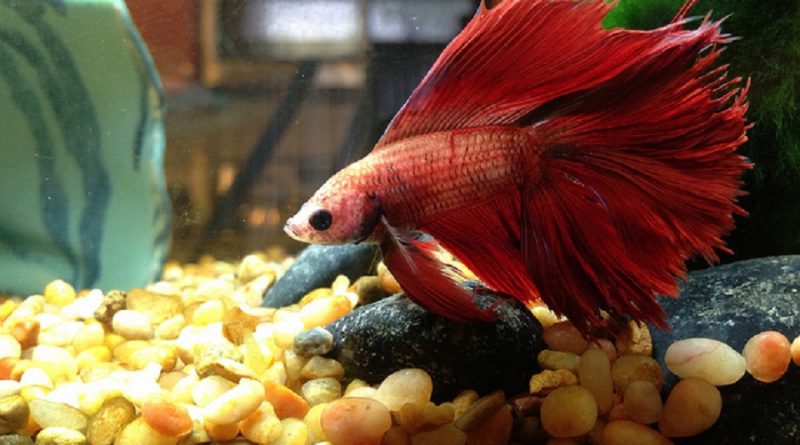5 cool facts about colorful Betta Fish in the Aquarium
Colorful Betta fish fighting
Betta fish are also known as the Siamese fighting fish or Betta Splendens.The fish actually originated in Cambodia, Thailand and will only grow to about three inches or seven centimeters. These are great pets to have for younger children or just as a first pet. They are not too peculiar about anything and are not that much upkeep, but most fish aren’t. A good healthy betta will live about two to three years.
However, like most fish, they can get many bacterial infections or fungus growing on them. If you would like a tank of betta fish, you will need to know that males cannot be kept in the same tank. They are extremely jealous and are prone to fight because betta splendens fish are very territorial.
In this article from http://aquariumfishblog.com, we explain how to take care of your aquarium, aquarium fish, aquarium plants and aquarium fish diseases.
Behavior
Bettas are semi-aggressive fish so it’s best that you keep them in a tank with appropriate species as well. If you want to mix betta fish will other fish, you should know that betta fish are top dwellers so you will want to mix them with middle and bottom dwellers to give your tank fuller look. Depending on the amount of fish, you will need at least a three-gallon tank for betta fighting fish. However, the more you add to the tank, you will need more water space.
Color variation
Bettas are very colorful and their fins are very long flowing. Bettas are actually one of the most well-known aquarium fish and range in colors. You will find many betta fish with blues, purples, reds, and even white. To tell the difference between the two sexes, you will want to pay close attention to the length of the fins and the colors of the fish. Females are dull and not very colorful and have shorter fins. You will also notice that a healthy female betta will display some horizontal stripes.
Keeping instruction
Bettas are a freshwater fish, which means you will want to fill the tank with some filtered tap water. In nature, you would find betta fish in rice paddies and shallow ponds or maybe even a slow moving stream. They are used to not having the depth of water, but they key to betta fish knows that they are tropical. In their native lands, the water could often get as high as 85F.
Bettas need heat to survive and cannot be in water that is below 75*F. The reason why betta fish are not recommended to be kept in a small bowl because it’s harder to control the temperature. Small fish bowls heat up quickly, but they lose their heat just as fast. In addition, they need a lot of surface space of the tank because they have special organs that allow them to breath directly from the surface and cannot take in oxygen from the water.
How to Create a Stimulating Environment for Your Betta Fish
A Betta fish can live up to three years if it is well taken care of. Remember that bettas do not necessarily have to stand alone. A betta male can be in a community of fish (without other betta males) and the betta females can be kept together. In addition, the following tips will help you create a stimulating environment to keep your betta fish happy and healthy.
Provide ample space – at least 24 square inches of water per inch of fish.
Provide a silent pump and filter to keep water clean and flowing.
Install an air pump for oxygen and a thermometer to control the water temperature with fish tank heater (it should usually be between 68 and 76 ° F, but depends on the species of fish – the bettas prefer a water temperature around 72-82 F).
Provide different elements that your fish explore – plants, rocks, structures, ceramic objects, etc. It should also provide a place for fish to hide. It is important to make sure that the “furniture” of the fish tank is non-toxic.
Keep fish in a quiet area away from TV and radio noise and direct sunlight.
Provide the right kind of fish food for fish species (fish may vary in nutritional needs).
Clean the tank regularly and use pure water free of chemicals (almost all tap water contains fluorine, chlorine, and impurities that can damage fish).
Be careful not to frighten fish with sudden changes in lighting or noise.
Conclusion
If the fish appears to be sick, take it to a veterinarian who specializes in fish along with a sample of water from the tank
While some fish prefer to be alone, most enjoy companionship and must be kept in pairs (or more); The fish may even regularly enjoy some kind of interaction with you.


